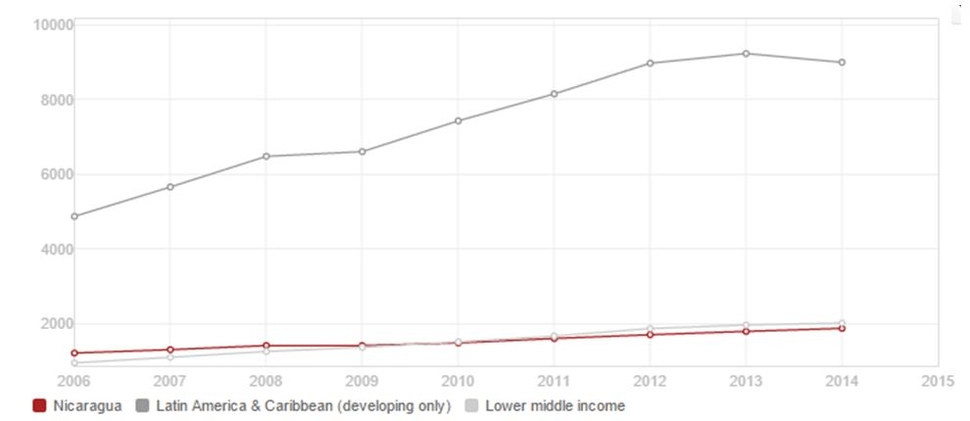Over the past decades, Nicaragua has been hit by devastating events; political as economical as environmental. These have left the nation in a precarious development position for this century. Different aspects are explained[1].
Economy: Nicaragua is the fourth poorest nation in the Western Hemisphere. Its economy is based mainly on agricultural exports (coffee, sugar, beef, and seafood) along with some manufacturing export.
Figure 1 GNI per capita, source: data.worldbank.org.
Health: Malaria and tuberculosis cases continue to increase and one out of three children suffer from chronic malnutrition. 64% of the population does not have access to sustained sanitation services.
Environment: large scale commercial agriculture have decimated the forests and left the land vulnerable to landslides and droughts.
Human Rights: approximately 76,000 landmines (left over from the Contra war) still remain in the soil and continue to kill and maim hundreds (particularly children).
Youth and Education: 29% of the children complete primary school, 5% of disabled children receive an appropriate amount of attention.
Housing[2]: 78% of the people live in substandard homes or do not have adequate housing (record in Latin and South America).
It is clear that in these aspects (and much more) the government falls short in disadvantage of the nation. The millennium development goals could be applied to Nicaragua. Each goal will directly address to recurring problems and failures.
Figure 2 Source: http://www.un.org/millenniumgoals/
[1] Source: Foundation for sustainable development: www.fsdinternational.org/country/nicaragua
[2] 2012, Source: Central America Data, Inter-American Development Bank (IDB): www.centralamericadata.com

